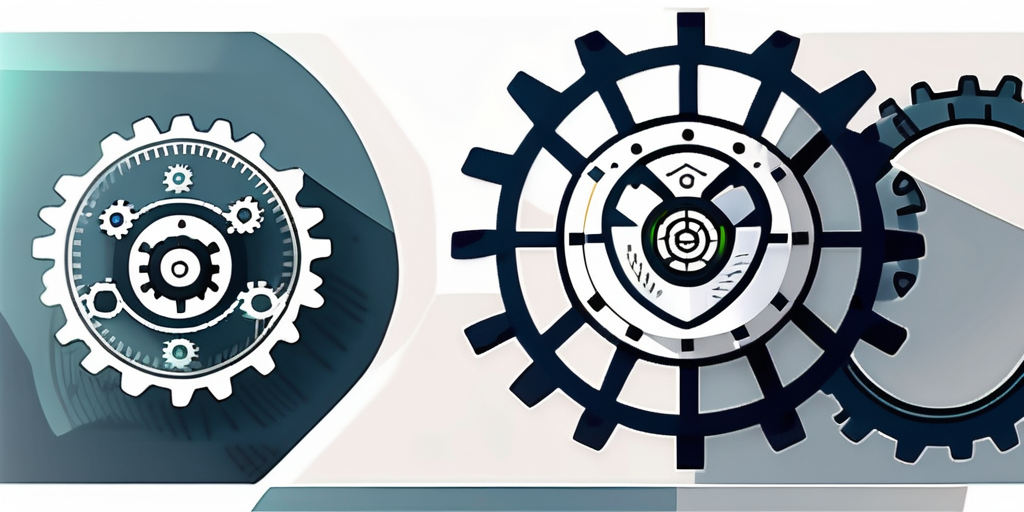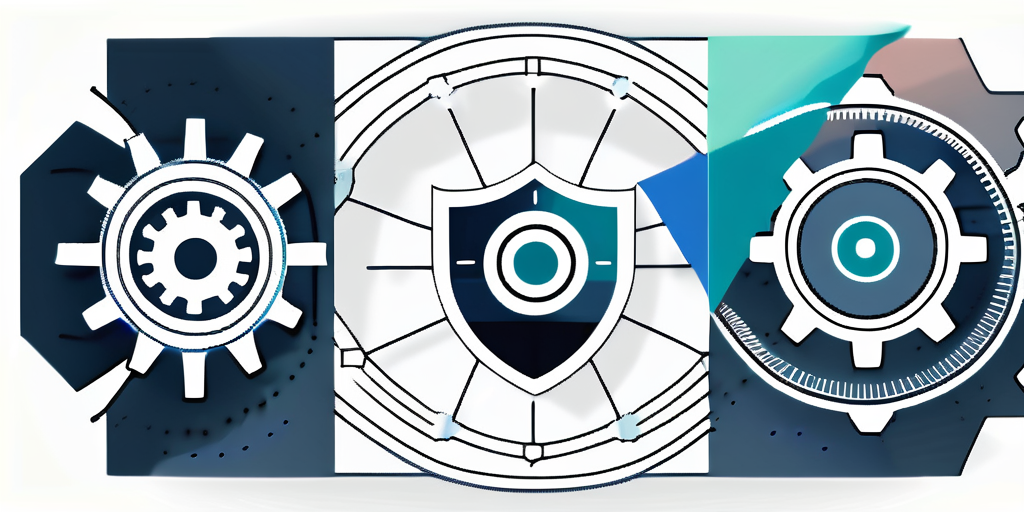Organizations increasingly adopt agile methodologies and DevOps practices to streamline their software development processes in today’s rapidly evolving digital landscape. However, security considerations often take a backseat amidst this quest for speed and efficiency. This article aims to comprehensively understand Agile Security in DevOps, highlighting its importance, key principles, implementation strategies, tools and techniques, and ways to measure its success.
Understanding Agile Security
To effectively incorporate Agile Security into DevOps, it is crucial first to grasp the concept and its significance. Agile Security is an approach that emphasizes the seamless integration of security measures within the Agile and DevOps frameworks. It recognizes the need to integrate security practices at every stage of the software development lifecycle, promoting a proactive and collaborative approach to identify and mitigate potential security risks.

Agile Security goes beyond traditional security practices often implemented as an afterthought. Instead, it advocates for a shift-left mentality, where security is considered from the very beginning of the development process. This approach ensures that security is not treated as a separate entity, but rather as an integral part of the overall software development strategy.
By incorporating Agile Security into DevOps, organizations can benefit from enhanced security posture, reduced vulnerabilities, and improved response to emerging threats. It enables teams to address security concerns in a timely manner, without compromising the speed and agility that are inherent in the Agile and DevOps methodologies.
The Importance of Agile Security in DevOps
Agile Security plays a critical role in ensuring the integrity, confidentiality, and availability of software applications. By incorporating security early on, organizations can minimize the risk of vulnerabilities and data breaches. This proactive approach helps identify and address security issues before malicious actors can exploit them.
Moreover, Agile Security facilitates compliance with regulatory standards, enhancing customer trust and organizational reputation. In today’s digital landscape, where data breaches and cyber attacks are becoming increasingly common, organizations must prioritize security to protect sensitive information and maintain the trust of their customers.
Agile Security enables organizations to respond quickly to emerging threats and adapt their security measures accordingly. By continuously monitoring and testing their systems, organizations can identify vulnerabilities and implement necessary security patches in a timely manner. This proactive approach helps stay one step ahead of potential attackers and minimize the impact of security incidents.
Key Principles of Agile Security
Agile Security is guided by several principles that enable organizations to embed security measures within their DevOps practices effectively. These principles include:
- Proactive Threat Modeling: Agile Security encourages organizations to proactively identify potential threats and vulnerabilities early in the development process. By conducting threat modeling exercises, teams can better understand the potential risks and implement appropriate security controls.
- Continuous Security Testing: Agile Security promotes the continuous testing of security controls throughout the software development lifecycle. By integrating security testing into the CI/CD pipeline, organizations can identify and address vulnerabilities in a timely manner.
- Transparent Knowledge Sharing: Agile Security emphasizes the importance of knowledge sharing and collaboration among team members. By fostering a culture of transparency, organizations can ensure that security-related information is shared effectively, enabling all stakeholders to make informed decisions.
- Cross-Functional Collaboration: Agile Security encourages collaboration between different teams, including developers, security professionals, and operations personnel. By involving all relevant stakeholders from the beginning, organizations can ensure that security is considered holistically throughout the software development process.
- Embracing Automation: Agile Security promotes the use of automation tools and technologies to streamline security processes. By automating security testing, vulnerability scanning, and compliance checks, organizations can reduce human error and improve the efficiency of their security practices.
By adhering to these principles, organizations can create a strong security culture permeating every development stage. This holistic approach ensures that security is not an afterthought but an integral part of the overall software development strategy.
The Intersection of Agile, Security, and DevOps
Understanding the relationship between Agile, Security, and DevOps is crucial for successfully implementing Agile Security measures. DevSecOps, an extension of DevOps, recognizes the importance of integrating security practices seamlessly throughout the software development cycle. It emphasizes the need for security to be treated as a shared responsibility, fostering collaboration and fostering a proactive security mindset among all team members.
Defining DevSecOps
DevSecOps is an approach that emphasizes integrating security practices and principles within the DevOps workflow. It seeks to embed security into DevOps processes, enabling organizations to identify and address potential security vulnerabilities and threats early on.
Regarding DevSecOps, it’s important to understand that security is not an afterthought or an additional step in the development process. Instead, it is an integral part of the entire software development lifecycle. By integrating security practices into every stage of the development process, organizations can ensure that security is considered from the very beginning and is continuously addressed throughout the entire lifecycle.
One of the key principles of DevSecOps is the concept of “shifting left.” This means that security practices are moved earlier in the development process, allowing for early detection and prevention of security issues. By addressing security concerns as early as possible, organizations can avoid costly and time-consuming security breaches later on.
The Role of Agile in DevSecOps
Agile methodologies play a crucial role in enabling successful implementation of DevSecOps. Organizations can effectively integrate security measures across the software development lifecycle by embracing Agile practices such as iterative development, continuous integration, and frequent feedback loops.
Agile methodologies promote flexibility and adaptability, allowing organizations to respond promptly to emerging security risks and evolving threat landscapes. With Agile, teams can quickly adapt their security practices and processes to address new vulnerabilities or emerging threats. This iterative approach enables organizations to continuously improve their security posture and stay ahead of potential risks.
Another key aspect of Agile in the context of DevSecOps is the emphasis on collaboration and communication. Agile methodologies encourage cross-functional teams to work together closely, breaking down silos and promoting knowledge sharing. This collaborative approach is essential for successfully integrating security practices into the development process.
Organizations can foster a culture of shared responsibility and collaboration by bringing together developers, security professionals, and operations teams. This ensures that security is not seen as the sole responsibility of a dedicated security team, but rather as a collective effort that involves everyone in the development and operations process.
Furthermore, Agile methodologies provide a framework for continuous improvement. Through regular retrospectives and feedback loops, teams can identify areas for improvement in their security practices and make necessary adjustments. This continuous learning and adaptation are crucial for maintaining a strong security posture in an ever-changing threat landscape.
In conclusion, the intersection of Agile, Security, and DevOps is a critical area for organizations to focus on to implement effective DevSecOps practices. By integrating security into the DevOps workflow and embracing Agile methodologies, organizations can ensure that security is considered from the beginning and continuously addressed throughout the entire software development lifecycle. This collaborative and iterative approach enables organizations to stay ahead of potential security risks and maintain a proactive security mindset.
Implementing Agile Security in DevOps
While the concept of Agile Security may seem promising, organizations often face challenges when it comes to implementing it within their DevOps environments. This section explores the steps that organizations can take to incorporate Agile Security seamlessly into their DevOps practices.
Agile Security is a methodology that aims to integrate security practices into the DevOps process, ensuring that security is not an afterthought but an integral part of the development lifecycle. By adopting Agile Security, organizations can minimize security risks, detect vulnerabilities early, and respond quickly to emerging threats.
Steps to Incorporate Agile Security in DevOps
Successful implementation of Agile Security requires careful planning and execution. Organizations should start by conducting a comprehensive security assessment, identifying potential vulnerabilities and prioritizing areas of improvement. This assessment should involve a thorough review of the existing infrastructure, codebase, and security policies.
Once the vulnerabilities are identified, organizations should establish clear security objectives. These objectives should align with the overall business goals and address the organization’s specific security needs. Organizations can set a clear direction for their Agile Security implementation by defining these objectives.
Next, organizations should create security-focused user stories. These user stories should outline each feature or functionality’s security requirements and expectations. By integrating security into the user stories, organizations can ensure that security considerations are included in the development process from the very beginning.
Furthermore, organizations must foster a culture of security awareness by providing regular training and knowledge-sharing opportunities to the entire development team. This training should cover secure coding practices, threat modeling, and security testing techniques. Organizations can empower the development team to make security-conscious decisions throughout the development process by equipping them with the necessary skills and knowledge.
By automating security testing and implementing continuous security monitoring, organizations can identify and address security issues promptly, preventing them from becoming more significant threats. Automated security testing tools can scan the codebase for known vulnerabilities, while continuous security monitoring can provide real-time visibility into the security posture of the application.
Overcoming Challenges in Implementation
Implementing Agile Security in DevOps is not without its hurdles. Organizations often face challenges such as resistance to change, resource constraints, and the need for specialized skills.
Organizations must foster a strong leadership commitment to Agile Security to overcome resistance to change. Leaders should communicate the benefits of Agile Security and create a sense of urgency around its implementation. Organizations can gain buy-in and support for the Agile Security initiative by involving key stakeholders and addressing their concerns.
Resource constraints can be mitigated by creating cross-functional teams. Organizations can leverage existing resources more effectively by bringing together individuals with diverse skill sets. These cross-functional teams can collaborate on security-related tasks, share knowledge, and work towards a common goal of implementing Agile Security.
Investing in training and upskilling is crucial to address the need for specialized skills. Organizations should provide opportunities for developers to learn about secure coding practices, threat modeling, and security testing techniques. Organizations can build a skilled and security-conscious workforce by investing in their employees’ professional development.
In conclusion, implementing Agile Security in DevOps requires careful planning, clear objectives, and a culture of security awareness. By following the steps outlined in this section and overcoming the challenges along the way, organizations can successfully incorporate Agile Security into their DevOps practices, ensuring that security is not compromised in the pursuit of speed and efficiency.
Agile Security Tools and Techniques
To effectively implement Agile Security in DevOps, organizations must leverage a range of tools and techniques that facilitate the integration of security practices throughout the software development lifecycle. This section explores some essential tools and effective techniques that enable organizations to bolster their security posture.

Essential Tools for Agile Security in DevOps
Organizations can utilize a variety of tools to enhance their security capabilities within a DevOps context. These tools include vulnerability scanners, code analysis tools, penetration testing platforms, security information and event management (SIEM) solutions, and secure coding frameworks. By leveraging these tools, organizations can automate security processes, identify vulnerabilities, and ensure compliance with industry standards.
Effective Techniques for Agile Security
While tools play an essential role, organizations must also adopt effective techniques to embed security within the Agile and DevOps frameworks. Techniques such as Threat Modeling, Security Champions Programs, Secure Code Reviews, and continuous security testing enable organizations to identify and address security vulnerabilities proactively.
Measuring the Success of Agile Security in DevOps
Continuous improvement is key to the success of Agile Security in DevOps. Organizations must establish metrics and key performance indicators (KPIs) that enable them to measure their security practices’ effectiveness and identify improvement areas.

Key Performance Indicators for Agile Security
Organizations can measure the success of their Agile Security practices through various KPIs. These include the frequency and severity of security incidents, the time taken to fix vulnerabilities, the level of code coverage in security testing, and the percentage of security training completion among developers. Regularly monitoring these indicators enables organizations to refine their security processes and adapt to evolving threats.
Continuous Improvement in Agile Security
Agile Security in DevOps is an ongoing process, requiring continuous improvement and adaptation. By fostering a culture of learning, promoting feedback loops, and leveraging insights gained from monitoring KPIs, organizations can constantly enhance their security posture and stay one step ahead of potential threats.
Agile Security in DevOps is not merely a trend; it is a necessity. With cybercriminals becoming increasingly sophisticated, organizations must prioritize security throughout their software development lifecycle. By implementing Agile Security practices, organizations can effectively mitigate risks, enhance customer trust, and safeguard their digital assets in today’s dynamic threat landscape.
As you navigate the complexities of Agile Security in your DevOps practices, remember that expert guidance can make all the difference. Blue Goat Cyber, a Veteran-Owned business, specializes in a spectrum of B2B cybersecurity services tailored to your needs, including medical device cybersecurity, penetration testing, and compliance with HIPAA, FDA, SOC 2, and PCI standards. Protect your digital assets and maintain the trust of your customers with our dedicated support. Contact us today for cybersecurity help!


